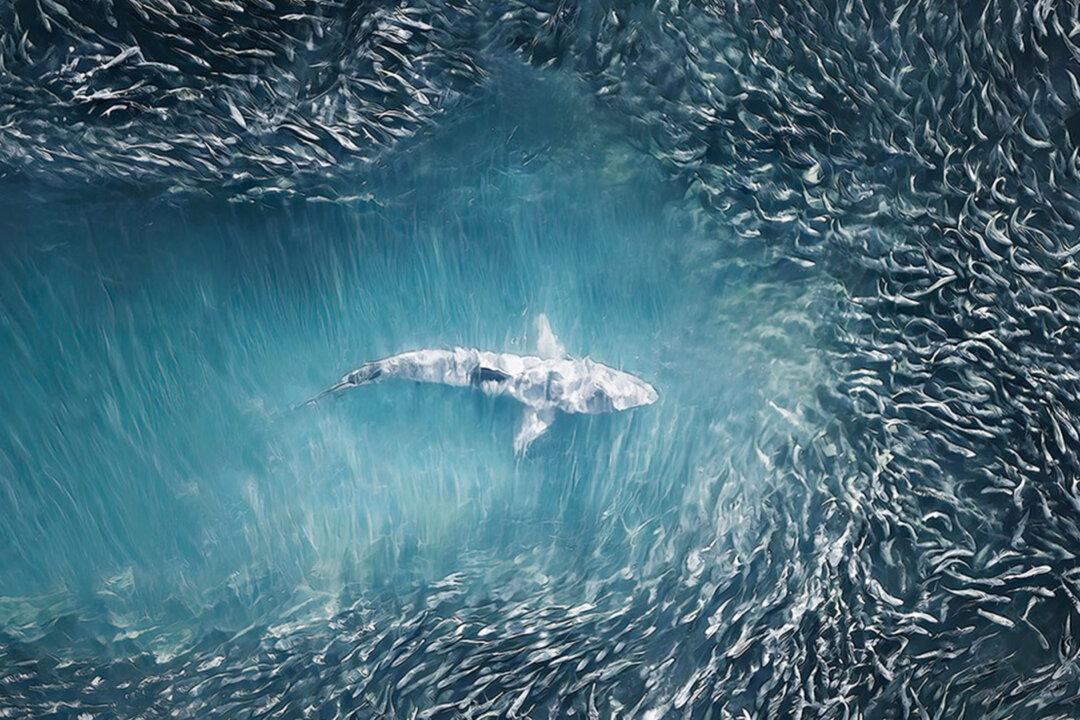She learned to fly first before graduating to drone photography, but once Joanna Steidle, 50, got her first camera drone, the deal was done. Her life completely changed, as Steidle told The Epoch Times. She became an aerial artist specializing in marine photography and shadow plays from above while becoming a winner in a global drone photography competition.
“I live about three miles from the ocean,” said Steidle, who hails from the little town of Southampton, New York. She heads to the shoreside with her drone in the mornings in search of marine life, namely, bait balls—gargantuan schools of bunker fish that number in the tens or hundreds of thousands.






